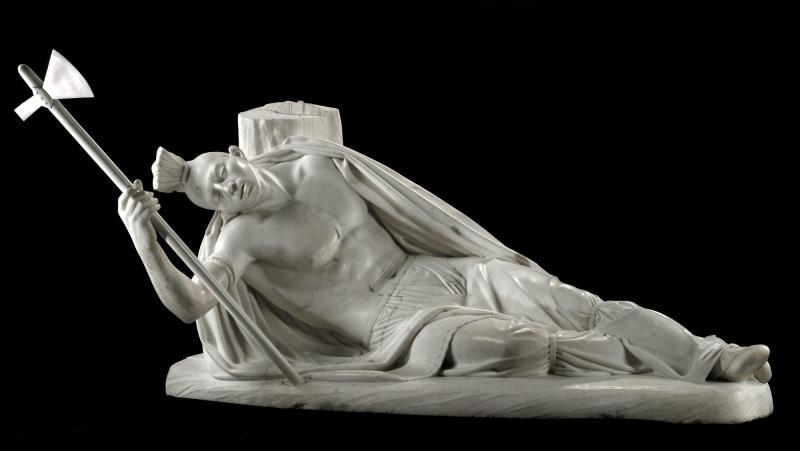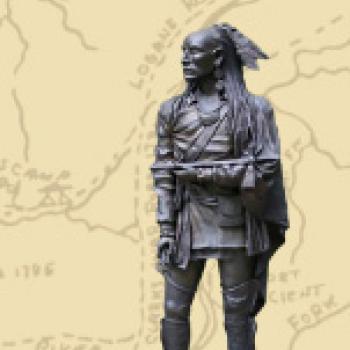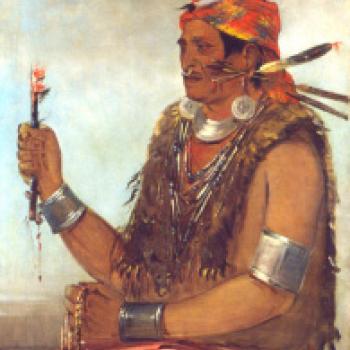
His name meaning Shooting Star or “Panther Across the Sky” in his native Shawnee language, Tecumseh (1768-1813) was born near present-day Chillicothe, Ohio, and rose to fame as a brilliant orator and military strategist who in the early 19th century urged the tribes of the Northwest Territory to band together as one nation to resist white encroachment on their lands. He remains an enduring symbol of Native American resistance to white conquest.
As a teenager and young man, Tecumseh joined earlier Native American unification movements led by Joseph Brant (Mohawk), Little Turtle (Miami), and Blue Jacket (Shawnee). Under the leadership of Blue Jacket, he participated in the 1794 Battle of Fallen Timbers in present-day Lucas County, Ohio, where U.S. Major General Anthony Wayne and his troops defeated the united Native American forces. As a result of this defeat, the Treaty of Greenville (1795) forced Native Americans to cede most of what is now the state of Ohio to the United States. The harsh terms of this treaty were one of Tecumseh’s motivations for joining his younger brother Tenskwatawa (1775-1836) in the formation of a new inter-tribal movement that sought to organize tribes east of the Mississippi River into their own separate and independent Native American nation.


